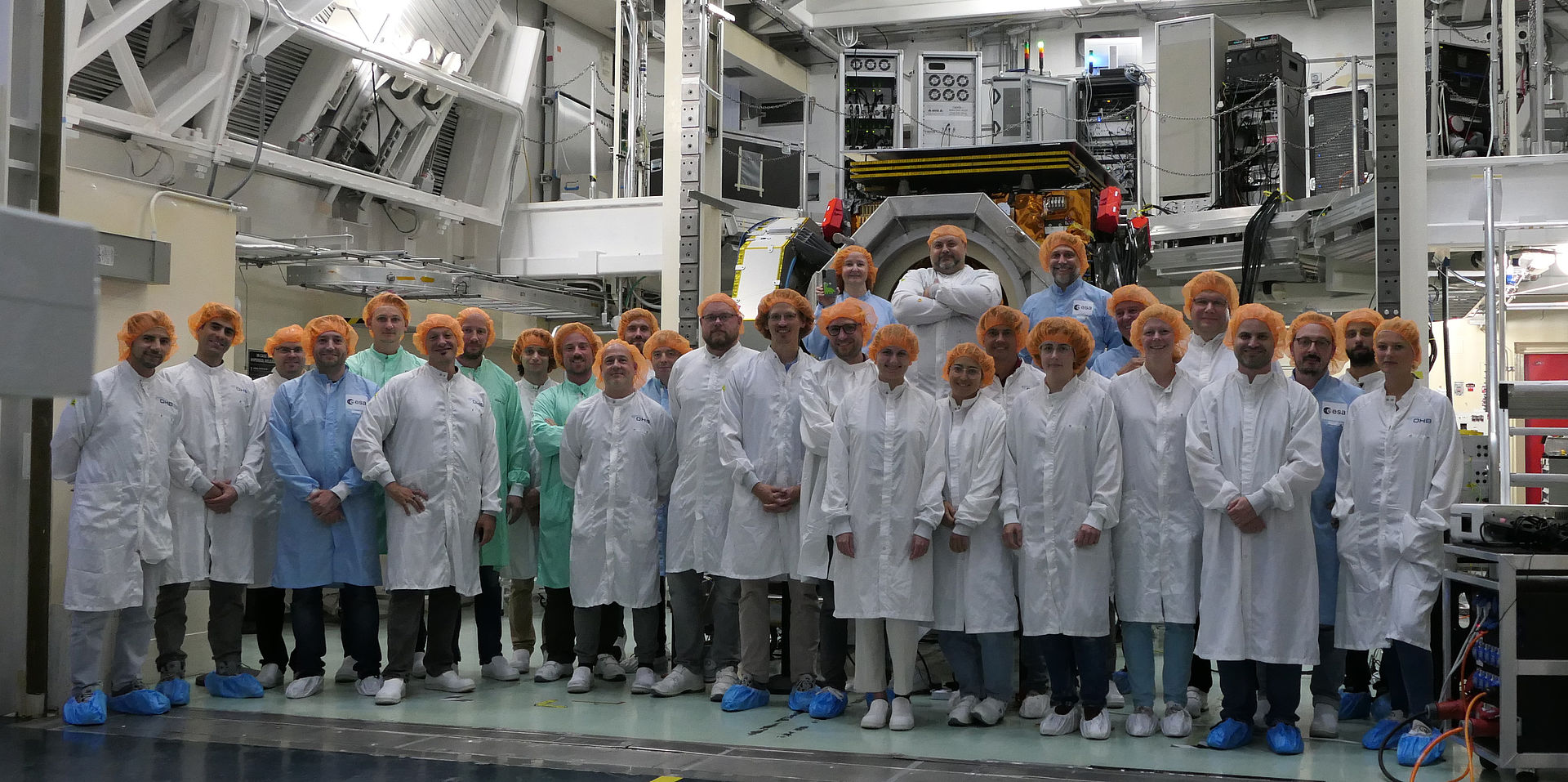
Cape Canaveral, Florida, 7 October 2024 - Successful lift-off for the European Space Agency's (ESA) Hera mission: The Hera asteroid probe was launched on 7 October 2024 at 16:52 CEST on a Falcon 9 rocket from SLC-40 at the Cape Canaveral Space Force Station in Florida. After separation from the rocket, Hera sent her first sign of life from space at 18:13 CEST. There was great cheer from all the teams when this ‘first signal’ was received.
Hera on her way
Hera is now on her way to the double asteroid system Didymos / Dimorphos. OHB System AG, a subsidiary of the space and technology group OHB SE, has developed, built, and tested the asteroid probe on behalf of the European Space Agency (ESA) in only four years. "One of the biggest challenges of this mission has been the tight schedule. Getting a spacecraft and all its instruments ready for launch in just four years is the result of a unique team effort. I would like to thank ESA and all our partners for their excellent cooperation," says Dr Stefan Voegt, Hera project manager at OHB, who gave the go-ahead for the spacecraft from his seat in the control container in Florida on launch day.
Hera mission background
On 26 September 2022, NASA crashed their DART spacecraft into Dimorphos, the smaller body of the double-asteroid Didymos system. The kinetic impact of this ‘double asteroid redirection test‘, changed the orbit of the small asteroid moon. For the first time in history, humankind had successfully deflected a celestial body from its orbit.
But there are still many questions that ESA’s Hera hopes to answer. How did the asteroid react to the impact? Is there a crater? Or has the asteroid been completely reshaped? What is the precise mass of Dimorphos? And how much material was ejected into space during the impact? These are just some of the questions that it aims to answer starting upon arrival at the asteroid pair in two years' time.
The probe carries eleven instruments and supports a radio science experiment. One of the highlights of the mission will be the deployment of two CubeSats in deep space. These shoebox-sized mini-satellites, 'Juventas' and 'Milani', will contribute to the investigation of the properties of Dimorphos. They will land on the asteroid at the end of their mission. The Hera mission will also be used to demonstrate new technologies in deep space, including e.g. autonomous vision-based navigation as well as guidance and control.
Powerful collaboration
Around 100 European companies and institutes across 18 ESA member states have been involved in making Hera happen. OHB System AG led the industrial consortium, including responsibility for the overall spacecraft design, development, assembly and testing.
More information and details about the mission, the probe and its instruments can be found found on ESA's webpage and in the Hera Launch Kit
Contact for media representatives:
Marianne Radel
Head of Corporate Communications
Phone: +49 421 2020 9159
Email: marianne.radel@ohb.de
Contact for investors and analysts:
Marcel Dietz
Investor Relations
Phone: +49 421 2020 6426
Email: ir@ohb.de

